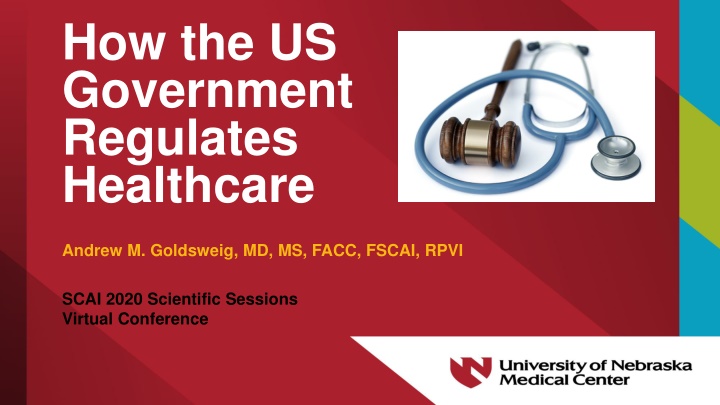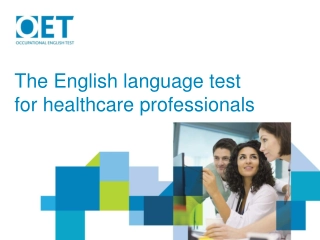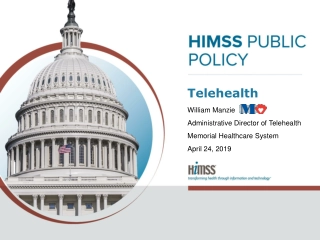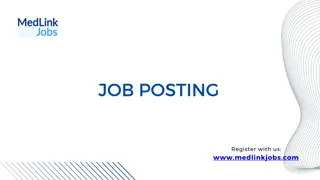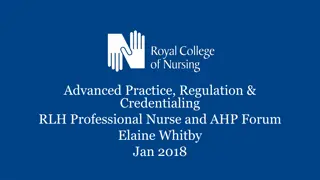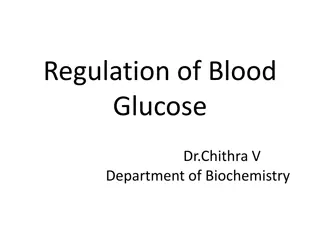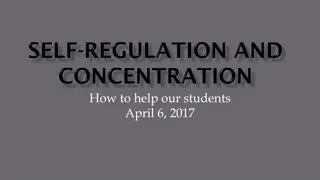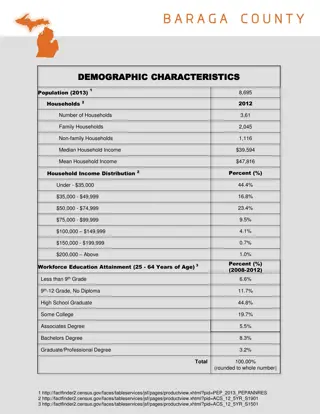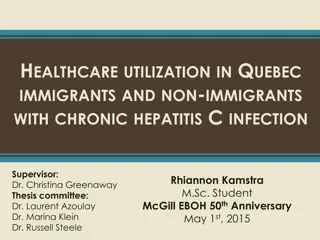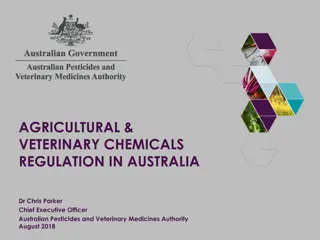US Government Healthcare Regulation
The US government regulates healthcare through legislative processes involving introducing bills, committee reviews, floor debates, and presidential approval. Various committees in Congress oversee healthcare regulations, such as the HELP Committee in the Senate and the Energy and Commerce Committee in the House of Representatives.
Download Presentation

Please find below an Image/Link to download the presentation.
The content on the website is provided AS IS for your information and personal use only. It may not be sold, licensed, or shared on other websites without obtaining consent from the author.If you encounter any issues during the download, it is possible that the publisher has removed the file from their server.
You are allowed to download the files provided on this website for personal or commercial use, subject to the condition that they are used lawfully. All files are the property of their respective owners.
The content on the website is provided AS IS for your information and personal use only. It may not be sold, licensed, or shared on other websites without obtaining consent from the author.
E N D
Presentation Transcript
How the US Government Regulates Healthcare Andrew M. Goldsweig, MD, MS, FACC, FSCAI, RPVI SCAI 2020 Scientific Sessions Virtual Conference
Conflicts Clinical Trials: Boston Scientific Edwards Abbott Abiomed Consultant: IBM Watson Health
Outline Intro to Advocacy How a US Law is Made How a Device is Approved Alphabet Soup of Healthcare Payment
Intro to Advocacy Advocacy definition: work done by members of the public to support a particular policy or cause SCAI is committed to advocacy for the interests of interventional cardiologists and their patients. Advocacy is critical to guide legislators to introduce and pass laws that support these interests. This presentation accompanies the new Advocacy 101 section of the SCAI website.
How a US Law is Made 1. A legislator introduces a bill (proposed law) into one of the two chambers of the U.S. Congress: the Senate or House of Representatives. 2. In that chamber, the bill is reviewed by a committee of legislators responsible for the issues addressed by the bill. At a committee hearing, the legislators vote to send the bill to the full chamber. https://s3.amazonaws.com/libapps/accounts/51751/images/how-us-laws-are-made__1_.png
How a US Law is Made In the Senate, most healthcare bills are reviewed by the Committee on Health, Education, Labor, and Pensions (HELP), and Medicare and Medicaid fall under the jurisdiction of the Senate Finance Committee. In the House of Representatives, healthcare is regulated by the Energy and Commerce Committee, and spending falls under the purvey of the Ways and Means Committee. https://s3.amazonaws.com/libapps/accounts/51751/images/how-us-laws-are-made__1_.png
How a US Law is Made 3. The bill is debated on the floor by the full chamber. 4. A similar bill is introduced in the second chamber of Congress. 5. The relevant committee in the second chamber reviews the bill and votes to send the bill to the full chamber. 6. The bill is debated on the floor by the second chamber. https://s3.amazonaws.com/libapps/accounts/51751/images/how-us-laws-are-made__1_.png
How a US Law is Made 1. A conference committee including members from both chambers convenes to reconcile the two chambers versions of the bill. 2. Each chamber votes to pass the reconciled bill. 3. The president signs the bill into law. If the president refuses to sign the bill (called a veto), the two chambers may still pass the bill with a 2/3 majority. https://s3.amazonaws.com/libapps/accounts/51751/images/how-us-laws-are-made__1_.png
How a Device is Approved The Food and Drug Administration (FDA) is the federal agency responsible for promoting public health by supervising medications and medical devices. The FDA is an agency of the U.S. Department of Health and Human Services, one of the federal executive departments.
How a Device is Approved When a company develops a novel device, and the company wishes to conduct a clinical trial, the company requests from the FDA an Investigational Device Exemption (IDE). The terms of the IDE, negotiated with the FDA, allow the company to use the device in a specified protocol to collect data about its safety and efficacy.
How a Device is Approved When the company believes they have clinical trial data to demonstrate safety and efficacy of the novel device, they ask the FDA for Premarket Approval (PMA) to be able to market the device commercially. The FDA then reviews the data and approves the device. If a novel device is similar to a previously approved device, the company may apply for approval via the 510(k) pathway, which is simpler and faster than a PMA.
How a Device is Approved 510(k) novel expedited pathway; device with same purpose but different technology from previous 1. Traditional 510(k) (1998) no FDA-recognized standards for device class, multiple modifications from previous, 90 days 2. Abbreviated 510(k) (2019) device conforms to FDA- recognized standards in its class, 60 days 3. Special 510(k) (2019) 1 modification from previous, only 1 specialist needed to review, 30 days
How a Device is Approved The FDA is not allowed to regulate the practice of medicine, so physicians may use drugs or devices as they see fit. However, the FDA does ban companies from marketing items for off-label (unapproved) purposes.
Alphabet Soup of Healthcare Payment Payment for healthcare in the U.S. is very complicated. Many people have private health insurance provided by their employers or purchased individually.
Alphabet Soup of Healthcare Payment The Center for Medicare and Medicaid Services (CMS) regulates 2 federally-sponsored payment systems that account for 40 percent of healthcare expenditures . Medicare covers Americans aged 65 and older. Medicaid covers poor Americans who qualify and apply.
Alphabet Soup of Healthcare Payment Within Medicare and Medicaid, there are a large number of different plans, often administered by private insurance companies, that provide varying degrees of coverage. CMS allows its contractors to make most coverage decisions, and CMS itself only makes a few National Coverage Determinations (NCDs) each year stating for which patients and physicians CMS will pay for a specific therapy. Many but not all private insurance coverage determinations are based upon the NCD.
Alphabet Soup of Healthcare Payment Medicare s allowed charges for physicians, based on the time and effort, are used in determining relative value units (RVUs). A 31-member multispecialty advisory committee of the American Medical Association (AMA) called the Relative Value Update Committee (RUC, pronounced ruck ) assigns a number of RVUs to each new Current Procedural Terminology (CPT) code and reviews codes for which changes have been proposed. The RUC frequently surveys physicians for input: this is an opportunity for advocates to have their voices heard.
Alphabet Soup of Healthcare Payment The Medicare Access and CHIP Reauthorization Act of 2015 (MACRA) expanded CMS s move from fee-for-service to a quality- based payment system. MACRA repealed annual fee increases for fee-for-service medicine in favor of two new systems: the Merit-Based Incentive Payment System (MIPS) and Alternative Payment Models (APMs). MIPS adjusts CMS payments to a physician group based upon four factors: quality (Physician Quality Reporting System, PQRS), cost (Value-Based Payment Modifier, VBPM), promoting interoperability using electronic health records (EHRs), and improvement activities. APMs are more than ten other CMS payment systems that include financial incentives to provide high-quality, cost-efficient care.
Summary Intro to Advocacy How a US Law is Made How a Device is Approved Alphabet Soup of Healthcare Payment Go to ADVOCACY 101 on the new SCAI.org for more!!!
Andrew M. Goldsweig, MD, FACC, FSCAI, RPVI Associate Director, Structural Heart Disease Assistant Professor University of Nebraska Medical Center 982265 Nebraska Medical Center | Omaha, NE 68198-2265 cell 917.572.6363 | office 402.559.5151 | fax 402.559.8355 andrew.goldsweig@unmc.edu
Gratuitous Photo of My Kids with Cardiac Devices
